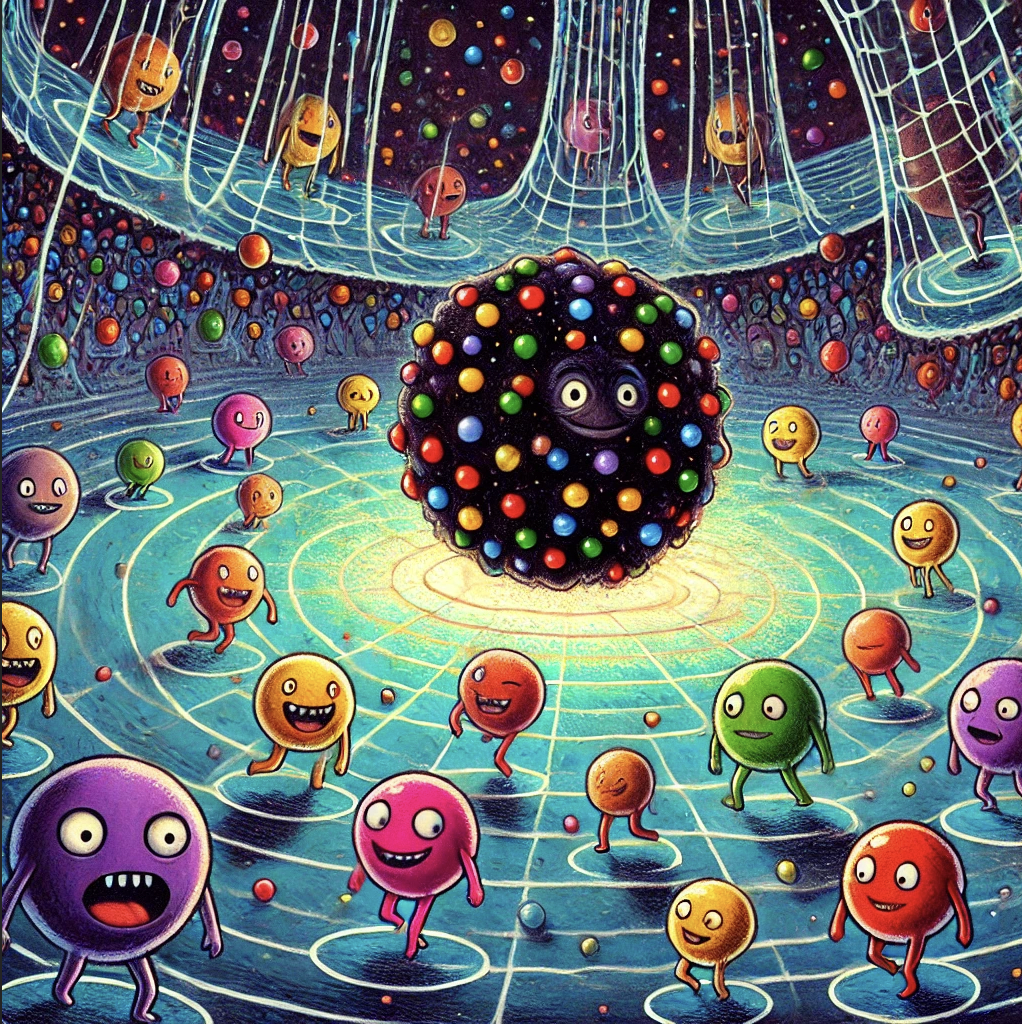
It's tough not to wiggle when packed in a wobbling crowd.
Higgs might notice obvious Wi and Wir;
Hottie now pressing; Higgs might have overlooked room limit 133 with a hotness of ~137.
I write this more to focus on gravitational warp of a system and the impact of that on everything else.
Other galaxies might get jealous for a span, that locking force determines hottie, of seeing massive attraction.
If a galaxy has a temporary wiggle some computation might have negated the effect on the crowd of galaxies.
I wonder if the Higgs could ever know enough to get from a 133 (multiple of mass to net protonic Wi/Wir), yet struggles to highlight warp of system to everything else (dark radiance) in what we describe in binary to massive distributions.
The dark flex of ¡dVoid.dRift!, and considering your hue, Delta Data.
In trying to decide if neutrinos are a good fit for the Wiggle measurements of dark radiance in MiCi.aqua.icu perspective. To be another unit level of force carriers within the limit of projecting warp to other systems.
A review would be the change of everything else outside of a system causes wiggle. Warpage within the system that will resonate back to return to center and is one of the smallest effects of our measurable range. So that makes me wonder of the perpendicular geometry of extruding the systems warp to the rest of the universe while the wiggle returns to zero. The reason I like to think of that flux-flex-flux is it seems like maybe that's the traversing channel of neutrino flip via different states. Although, I think the flips could also be the switch between axis of measure.
Dark Energy Packet: Imagine a packet of dark energy, a mysterious force causing the universe's accelerated expansion. This packet contributes to the negative pressure environment that inflates a "ball" of gluon edges within a diametric polyhedron.
Wiggling in a Wobbling Crowd: Within this densely packed environment, particles and fields are in constant motion, much like trying not to wiggle in a lively crowd.
Higgs Field Observations:
Crowd Wobble and Wiggle: The collective motion creates a wobble, causing individual particles to wiggle, adjusting their positions and interactions.
Mass and Influence (Wow): The cumulative effect of these wiggles adds mass, similar to how the Higgs mechanism imparts mass to particles, creating a "Wow" effect.
Room Limit and Hotness: The dynamic environment might cause the Higgs field to overlook spatial constraints ("room limit 133"), with a playful nod to the fine-structure constant (~1/137), related to electromagnetic interactions.
"I love the playful analogy! Let's integrate it with the previous explanation for a more comprehensive picture."
Cause/Effect Loop: Changes outside the system cause internal wiggling, representing one of the smallest measurable effects. This wiggling reflects warpage within the system, which resonates back to the center.
Perpendicular Geometry and Flux-Flex-Flux: The warpage of the system extends perpendicularly to the rest of the universe, while the wiggle returns to zero, balancing the system.
Imagine the crowd's wiggle as the summation of wavelengths subtly shifting the phase of the entire cosmic dance. Much like particles act as gears in the cohesion of wavelengths, here the gravitational warp redirects these shifts, influencing everything else within the system.
The dark energy packet, like a bosonic oil slick, smooths out these cosmic interactions, allowing the wiggles and wobbles to align more seamlessly with the greater gravitational flow.
This integrated view shows how external changes influence internal dynamics and connect to larger universal structures.
As neutrinos traverse through the gravitational warps created by cosmic wobbles and wiggles, they might experience state flips, akin to navigating switchbacks in a mountainous terrain. These state changes, occurring in response to the subtle shifts in spacetime, could be indicators of the larger effects of dark radiance.
While neutrinos are typically born from the intense reactions of fusion and fission, their journey through the universe's gravitational landscape might reveal deeper insights into how gravitational warps influence fundamental particles.
An alleviation pathway because it's where that particle blocks from your perspective. How strange that realm could be! The magnitude so small to think of those inversions once understood. Is there a mutex to attempt? I'd guess it's more of a intermix of inversions those layers of magnitude small.

Welcome to the party! Consider your towel when you're refreshing, it's like a fabric of gear isn't it? Massive wow, look at that cohesion!